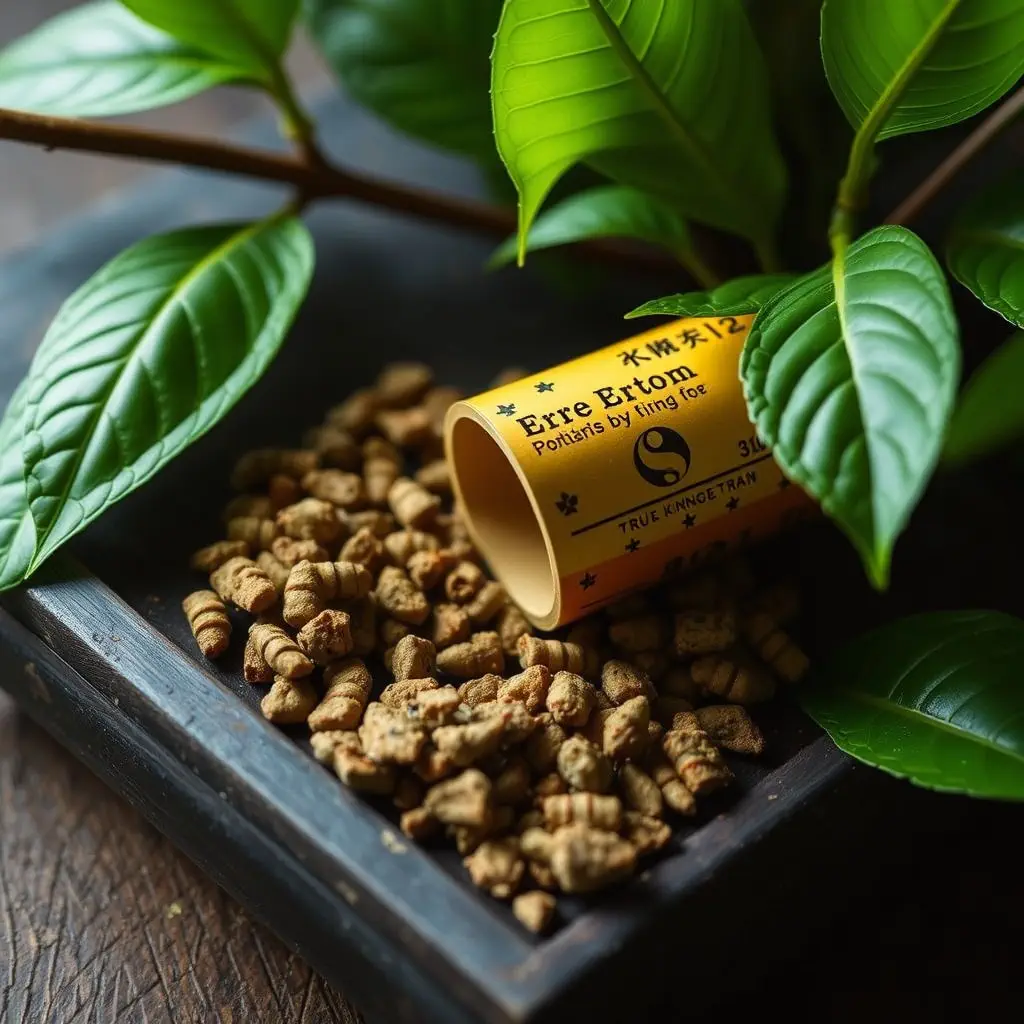The Lotus Blue Flower strain of Kratom, known for its balanced alkaloid composition including mitragynine and 7-hydroxymitragynine, holds potential as a natural remedy for joint pain relief. Its interaction with opioid receptors may provide analgesic effects comparable to traditional medications but with fewer side effects. The strain's historical use in traditional herbal remedies is supported by recent scientific attention highlighting its anti-inflammatory properties, which could inhibit pro-inflammatory cytokines and enzymes. Beyond direct pain relief, Lotus Blue Flower may enhance mood and energy, indirectly aiding in managing chronic joint conditions by improving overall quality of life and encouraging physical activity that supports joint health. However, it's crucial to consult healthcare professionals before using this strain due to its potency and the variability in individual responses. Those interested in exploring natural alternatives for joint pain should consider the Lotus Blue Flower strain with caution, starting with modest doses and ensuring sourcing from reliable providers to maximize safety and efficacy within a comprehensive pain management strategy.
Exploring the natural avenues for joint pain relief, an article sheds light on the potential benefits of kratom, with a particular focus on Lotus Blue Flower. This botanical approach offers insights into its role in alleviating discomfort. Diving into the science behind these natural remedies, we uncover their mechanisms for joint pain alleviation. Additionally, the article guides readers on how to safely incorporate kratom and Lotus Blue Flower into their wellness routines for effective pain management. This comprehensive exploration will enlighten those seeking alternatives to traditional treatments.
- Understanding Joint Pain Relief with Kratom and the Role of Lotus Blue Flower
- The Science Behind Kratom and Lotus Blue Flower for Natural Joint Pain Alleviation
- Safely Integrating Kratom with Lotus Blue Flower into Your Joint Pain Management Routine
Understanding Joint Pain Relief with Kratom and the Role of Lotus Blue Flower

Understanding joint pain relief through Kratom begins with a grasp of its primary active components, alkaloids such as mitragynine and 7-hydroxymitragynine, which are believed to contribute to its analgesic properties. These compounds interact with the body’s opioid receptors, potentially offering pain relief without the side effects associated with traditional pharmaceuticals. The Lotus Blue Flower, a strain of Kratom, is particularly noteworthy for its balanced alkaloid profile that may enhance this effect. It has been traditionally used in herbal remedies and is appreciated by many users for its gentle yet effective pain-relieving qualities.
The role of the Lotus Blue Flower in joint pain relief is multifaceted. Its potential effects on mood and energy levels, often reported by users, can indirectly aid those with chronic joint conditions by improving overall well-being and allowing individuals to engage more fully in activities that support joint health. Additionally, the anti-inflammatory properties attributed to Kratom may help reduce swelling and inflammation associated with joint pain. It’s important for users to consult healthcare professionals before incorporating Kratom into their treatment regimen, as individual responses can vary widely. The Lotus Blue Flower strain is one of many Kratom options, and its unique alkaloid profile may offer a distinct experience for those seeking natural alternatives for joint pain management.
The Science Behind Kratom and Lotus Blue Flower for Natural Joint Pain Alleviation

The scientific community has been exploring the potential therapeutic effects of kratom, a plant from Southeast Asia, and its role in natural joint pain relief. Mitragynine and 7-hydroxymitragynine, two alkaloids found abundantly in kratom leaves, have been studied for their analgesic properties. These compounds interact with opioid receptors in the brain, which can lead to pain reduction without the side effects commonly associated with prescription opioids. Additionally, the lotus blue flower, a variety of the common lotus plant, has garnered attention due to its rich phytochemical profile that includes alkaloids and flavonoids, which may contribute to its anti-inflammatory and analgesic effects. The synergy between kratom’s alkaloids and the bioactive components in the lotus blue flower could potentially offer a comprehensive approach to managing joint pain. Research suggests that the combination of these natural substances may help alleviate discomfort associated with arthritis and other rheumatic conditions, offering a promising alternative for those seeking natural remedies.
The Lotus blue flower has been used in traditional medicine for centuries, and recent scientific studies have begun to elucidate its medicinal properties. The anti-inflammatory agents present in the lotus blue flower are believed to work by inhibiting pro-inflammatory cytokines and enzymes that contribute to joint inflammation. When combined with kratom, which has its own pain-relieving effects, the result may be a potent natural treatment for joint pain. The combination of these two natural substances is thought to provide broader relief and address both the pain and inflammation associated with joint conditions. However, it is crucial for individuals considering such an approach to consult healthcare professionals beforehand, as the safety, efficacy, and appropriate dosing of kratom and lotus blue flower can vary based on individual health status and the specific condition being treated.
Safely Integrating Kratom with Lotus Blue Flower into Your Joint Pain Management Routine

Integrating Kratom with Lotus Blue Flower into a joint pain management routine can be a considered approach for individuals seeking natural alternatives to alleviate discomfort. The Lotus Blue Flower, a variant of kratom known for its unique alkaloid profile, may offer pain-relieving benefits due to the presence of mitragynine and 7-hydroxymitragynine, which are thought to interact with opioid receptors in the brain. When incorporating Lotus Blue Flower into your regimen, it is crucial to start with a low dosage to assess its effects on your body. Monitoring your response allows for adjustments to be made for optimal relief without overstepping into potentially sedative or euphoric effects that are more pronounced in certain strains.
Safety is paramount when experimenting with any new substance, and Lotus Blue Flower is no exception. It is advisable to consult with a healthcare provider before adding this supplement to your routine, especially if you have pre-existing health conditions or are taking other medications. Additionally, consistency in dosage and timing can help maintain a stable level of alkaloids in your system, which may contribute to more predictable pain relief. Always source Kratom from reputable vendors to ensure the purity and potency of the product you consume. By following these guidelines, you can explore the potential joint pain-relieving properties of Lotus Blue Flower as part of a holistic approach to managing your discomfort.
In conclusion, the exploration of joint pain relief through the synergistic properties of kratom and Lotus Blue Flower offers a promising natural alternative for individuals seeking relief. The scientific evidence supports their potential in alleviating discomfort without the side effects commonly associated with traditional medications. Integrating these botanicals into a daily wellness regimen may provide significant pain reduction, particularly for those experiencing chronic joint issues. It is imperative to approach this method thoughtfully and under the guidance of a healthcare provider, ensuring safe and effective use. With careful consideration and professional oversight, kratom combined with Lotus Blue Flower could be a valuable addition to one’s holistic pain management strategy.






